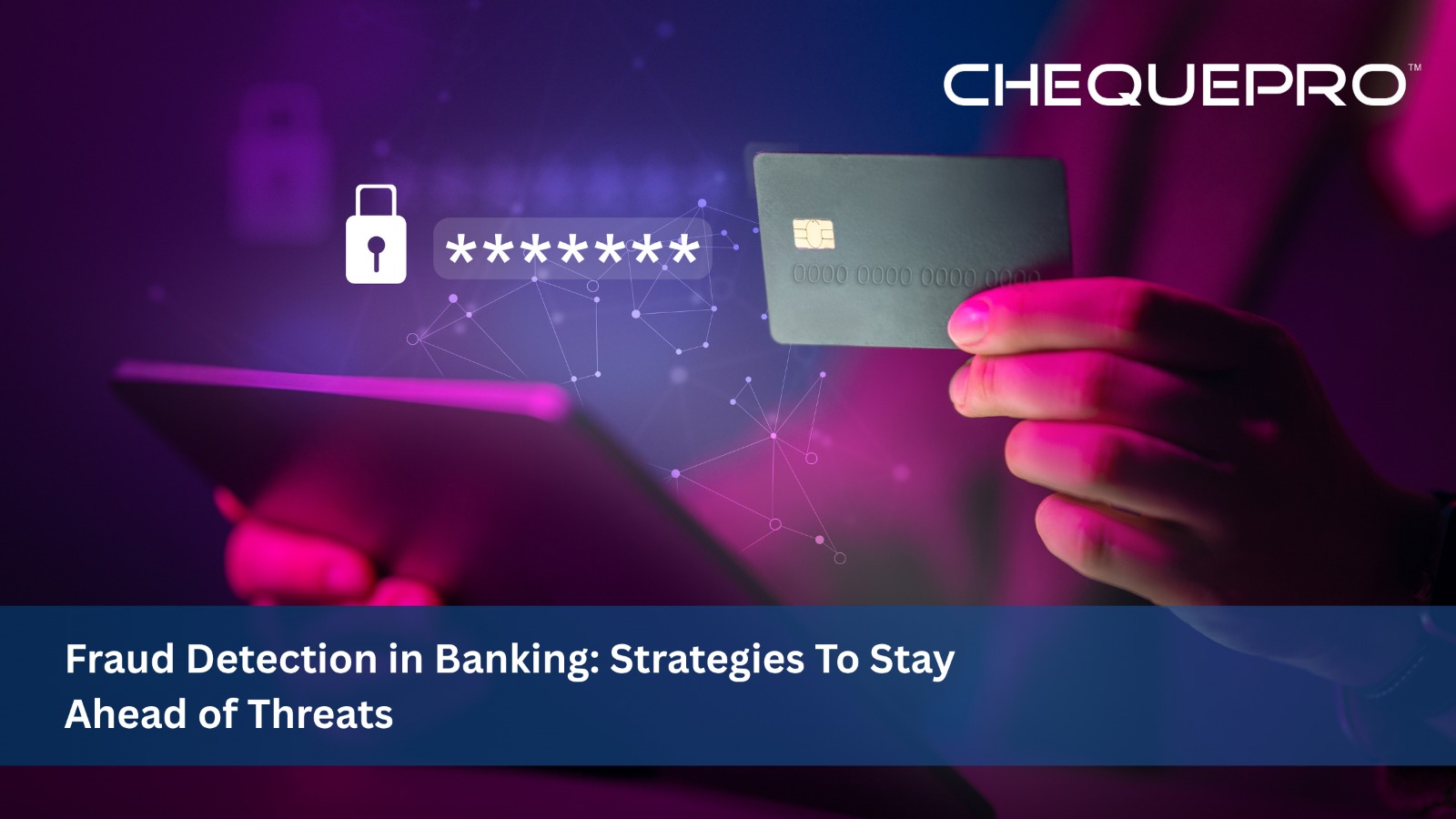Introduction
I met a friend a few days back who works at a bank. We were having a conversation about what is going around in the world, and suddenly, cybersecurity and online fraud came up.
We both agreed that banks have been under attack for as long as they have been around and how employing technologies to prevent fraud is so important. But with the changing times, scammers are also getting smarter. They are now faster and are using tricks we couldn’t have imagined before.
In light of this, cybersecurity and fraud detection become one of the most important tools for keeping your money safe and maintaining your trust in your bank.
So, let’s find out more about this and how banks handle these threats through this blog. Below, I have broken down what effective fraud detection technologies banks use and what advanced strategies are used globally to stay ahead of threats.
Understanding the Landscape Of Fraud
Fraud in banking systems has become a trend, with criminals developing smarter and quicker ways of stealing money from banks. Here, I have listed a few of the many fraud scammers do these days:
Cheque Fraud
Cheques have always been on the radar for criminals. Because it is easy, especially with manually written cheques, to tamper with them by changing the details on the cheque or even generating realistic fakes with AI algorithms.
Account Takeover
You might have seen those phishing emails asking you to “verify your account.” When attackers get hold of your login details, they can slip into your accounts, move your money, or apply for loans in your name before you even realise it.
Payment Scam
Scammers nowadays often pretend to be someone you know and ask for a quick payment transfer, or use deepfake voices that sound real enough to fool even the cautious. Many people have fallen prey to such scams and lost so much money.
Identity Fraud
These days, scammers have many tools to put together real and fake information to create identities that look legitimate on paper. They use these to open accounts, build credit, move money, and disappear before getting noticed.
Today, scammers are evolving and finding newer ways to commit fraud. Because of this, fraud detection becomes imperative to catch scammers. With time, banks have developed many sophisticated technologies to prevent fraud. Some of them I have listed below:
Also Read: The Importance of Fraud Detection in Modern Business Operations
Real-Time Monitoring and Analytics
Catching fraud the moment that it happens makes all the difference. That’s why banks lean on real-time monitoring and smart systems that learn patterns fast.
Transaction Scoring
Every payment gets a quick check. How much is moving, where it’s going, and what time it’s happening? If ever something looks unusual, it gets flagged for a closer look, and the transaction stops.
Behavioral Profiling
Banks keep track of your usual habits. If you always pay bills from your phone at night, a big transfer from a new device in the middle of the day will stand out.
Adaptive Machine Learning
These systems study past fraud cases to get better at spotting weird patterns that don’t match usual behaviour and detect any suspicious activity done by scammers immediately.
Strengthening Identity Verification
The first step in fraud detection is making sure people are who they say they are in order to prevent any identity theft.
Multi-Factor Authentication
Beyond passwords, banks require one-time codes, biometrics, and device fingerprinting or face IDs. Each of these additional factors raises the barrier for attackers.
Biometric Security
When using a banking app, face scans and fingerprints verify identity and provide an extra level of security. They offer protection unnoticed and do not impede the user’s flow.
Digital ID Verification
Using technology to verify and identify ID fakes assists banks in spotting fakes early.
These measures safeguard accounts and also aid financial institutions in maintaining compliance with regulatory requirements for protecting the user’s funds and identity.
Collaborative Intelligence Sharing
Banks collaborate to fight fraud and don’t just sit and wait for one of them to get attacked. They share intelligence on fraud with one another so they can identify and prevent new attempts from happening.
Real-Time Threat Feeds
If one bank detects an unusual volume of logins from new locations or strange payment processing requests, it alerts all other banks. This enables instant protective measures to be put in place so every bank can be proactive instead of reactive to the problem. This enables early prevention of spread.
Joint Investigations
Fraud rings don’t stick to one place. They’ll hit different banks, even different countries, trying to stay under the radar. So bank security teams talk to each other and swap clues to map out where these scams are coming from. This teamwork helps shut down bigger fraud networks before they can do more damage.
Standardised Reporting
Every scam looks different, but having a shared way to report and track them helps banks see patterns faster. So banks use a shared reporting system that makes it easier to spot patterns. It’s like everyone looking at the same map, spotting where scams are popping up, and planning together how to respond.
When banks share what they’re seeing, fraud detection gets faster and sharper. It’s one of the quiet reasons your money stays safe, even when scammers are trying every trick in the book.
Cheque Fraud Focused Strategies
Cheque-related fraud is also very common, especially in the manual processing of cheques. So banks and businesses use a mix of physical and digital tools to prevent cheque fraud.
Encrypted Check Templates
Cheque printing software, like ChequePro, locks down logos and signatures with encryption. If someone tries to tamper with the check layout, it won’t pass through.
Digital Imaging
Every cheque gets scanned and saved as a secure image when it’s issued. So that later, if someone tries to cash it, the bank can match it against the original image to spot any changes.
Positive Pay Integration
Before a cheque goes out, businesses send details like cheque number, payee name, and amount to the bank. If a cheque shows up with different details, it gets flagged or blocked.
Role-Based Approvals and Audit Trails
This allows only certain people with access to print and approve cheques. This ensures that only the right people can handle them, and every click and approval leaves a trail you can check later. This makes it a lot harder for insider fraud to slip by without anyone noticing.
Also Read: ChequePro: The Global Standard in Fraud Prevention and Financial Trust
How ChequePro helps with Fraud Detection
Let us now explore how ChequePro can help with fraud detection. ChequePro is a smart and efficient cheque printing software that keeps your payments safe and secure. Think of it as a smart tool that helps keep your cheques safe while making your payment process simpler and easier.
Encryption & Secure Design
ChequePro locks down sensitive details on your cheques like signatures and logos. It encrypts your data, so if anyone tries to mess with the file or copy it, the cheque simply won’t match up. It’s like having a quiet lock on every cheque you print, working in the background to prevent fraud.
Holograms, Watermarks, Micro-Text
They don’t rely just on encryption. ChequePro adds holograms, watermarks, and micro-texts and asterisks that are tough to duplicate. These elements add visible and hidden layers that make forging a cheque much harder.
Tamper-Proof Templates
The templates are locked down so only authorised users can access or modify them. Combined with encryption, this prevents any layout or content changes once a template is approved.
Conclusion
As long as the scammers are around, banks will not relax, as there is a need for tight security. From collaboration, real-time surveillance, to safe cheque printing, every technology is a step towards securing your funds.
Tools like ChequePro add that extra layer of protection, where it’s often forgotten—cheques. It aids businesses in safely printing cheques without making fraud detection complex.
Ultimately, the goal is to always be one step ahead so that scammers do not succeed in their fraudulent attempts.





